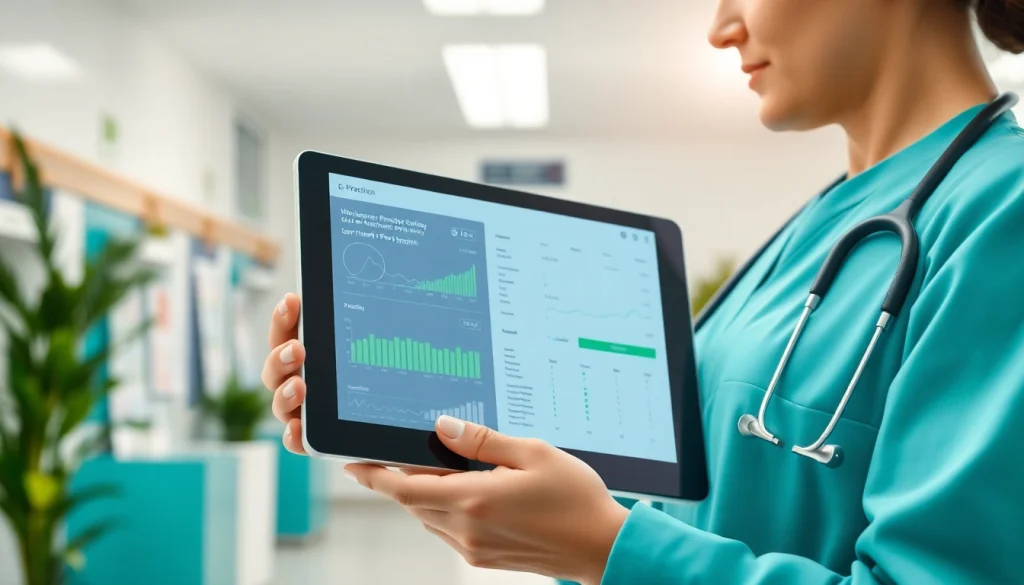Effective Strategies for Integrating Eprescribing Systems in Healthcare

Understanding E-Prescribing Systems
What are E-Prescribing Systems?
E-prescribing systems represent a transformative shift in the way prescriptions are managed and communicated within healthcare. At their core, these systems allow healthcare providers to electronically send prescriptions directly to pharmacies, reducing the need for physical paper prescriptions. This transition is not just about convenience; it encompasses a broad range of benefits aimed at enhancing patient care, ensuring medication safety, and streamlining workflows. An effective e-prescribing system integrates seamlessly with various electronic health records (EHR) and pharmacy management systems, enabling real-time access to patient medication records and improving overall healthcare delivery.
How Integrating E-Prescribing Systems Enhances Patient Care
Integrating e-prescribing systems profoundly impacts patient care. By reducing the chances of misinterpretation of handwritten notes and enhancing communication between providers and pharmacists, these systems play a pivotal role in increasing prescription accuracy. Furthermore, e-prescribing systems can alert prescribers of potential drug interactions and allergies, leading to safer medication practices. Additionally, patients experience greater convenience as prescriptions can be sent directly to their preferred pharmacy, thus minimizing wait times and improving medication adherence.
Moreover, integrating e-prescribing systems fosters greater collaboration among healthcare team members. Providers can share crucial information with pharmacists and other medical professionals, leading to a more coordinated approach to patient care. As a result, healthcare systems can achieve better patient outcomes and enhance satisfaction rates. In the landscape of integrating eprescribing systems, this holistic approach serves as a critical advantage in modern healthcare.
Common Types of E-Prescribing Platforms
Numerous e-prescribing platforms are available today, each designed to meet specific needs within healthcare settings. Common types include standalone e-prescribing applications, modules integrated into EHR systems, and pharmacy management systems. Standalone applications are versatile tools that can function independently, allowing for heightened flexibility in various practice environments.
On the other hand, EHR-integrated systems provide a more seamless experience, where prescribers have immediate access to comprehensive patient data, including medical history and current medications. This integration minimizes duplication of work and enhances data consistency across platforms. Pharmacy management systems, often used in retail settings, focus on the pharmacy’s workflow, ensuring that incoming electronic prescriptions are efficiently processed.
Key Benefits of Integrating E-Prescribing Systems
Improving Prescription Accuracy and Safety
One of the most significant advantages of integrating e-prescribing systems is the marked improvement in prescription accuracy and patient safety. Studies have shown that transition from handwritten prescriptions to electronic systems decreases medication errors significantly. Prescribers benefit from built-in decision support tools that offer warnings about potential drug interactions, allergies, and even dosage errors.
Furthermore, e-prescribing systems often allow for automatic refills and synchronization of prescriptions, which can lead to increased adherence to treatment plans. These features not only support the physicians in making well-informed decisions but also empower patients to manage their medications proactively. The reduction of errors has far-reaching implications, including decreased hospital readmissions and improved overall health care quality.
Streamlining Pharmacy Communication
Integrating e-prescribing systems streamlines communication between healthcare providers and pharmacies, which is crucial for timely patient care. Traditional methods often lead to delays due to illegible handwriting or miscommunications. E-prescribing eliminates these barriers, allowing prescriptions to be transmitted instantly and securely.
Additionally, many e-prescribing systems facilitate direct communication pathways for questions or clarifications regarding prescriptions. For example, pharmacists can easily reach out to prescribers regarding potential issues, thus fostering a collaborative teamwork environment essential for effective patient care.
Enhancing Patient Engagement and Compliance
By integrating e-prescribing systems, healthcare providers can significantly enhance patient engagement and compliance. These systems enable features like electronic reminders for prescription refills, patient education materials, and monitoring compliance rates. In this environment, patients feel more involved in their healthcare decisions, which can positively influence their adherence to medication regimens.
Moreover, patients benefit from user-friendly interfaces that provide easy access to their prescriptions and medication histories. Such access can lead to informed discussions between patients and their healthcare providers regarding treatment plans. When patients are well-informed and actively engaged, they are more likely to adhere to prescribed therapies and experience better health outcomes.
Challenges in Implementing E-Prescribing Systems
Overcoming Technical Barriers
While the benefits of integrating e-prescribing systems are substantial, the implementation process can be fraught with technical challenges. One significant barrier is the compatibility of e-prescribing software with existing EHR and pharmacy systems. Incompatibility can lead to data silos, where critical patient information remains isolated and inaccessible to healthcare providers.
Organizations must conduct thorough assessments of their current technology infrastructures to ensure smooth integration. Selecting e-prescribing solutions that provide robust interoperability and are compliant with industry standards is essential to facilitate a seamless transition and mitigate technical barriers effectively.
Addressing User Adoption and Training Needs
An essential aspect of successfully implementing e-prescribing systems is ensuring that healthcare providers, pharmacists, and administrative staff are onboard with the new technology. Resistance to change is a common issue, especially among staff who are accustomed to traditional prescribing practices.
To address this challenge, healthcare organizations should prioritize user training and ongoing support. Comprehensive training programs should be developed, including hands-on workshops, tutorials, and user guides to familiarize staff with new features. Additionally, involving team members in the decision-making process when selecting e-prescribing systems can lead to a greater sense of ownership and acceptance of the new technology.
Navigating Regulatory Compliance
Integrating e-prescribing systems involves navigating a complex regulatory landscape that varies by region and practice type. Compliance with federal and state regulations regarding electronic prescriptions is crucial to avoid legal issues and ensure patient safety. Regulations may include stipulations about data security, consent for data sharing, and protocols for information exchange.
Healthcare organizations must stay abreast of changing regulations and ensure that their e-prescribing systems align with all required standards. Consultation with legal experts and continuous education on compliance matters can provide organizations with the information necessary to maintain adherence to all relevant laws and regulations.
Best Practices for Successful Integration
Conducting Needs Assessments
To facilitate effective integration of e-prescribing systems, conducting thorough needs assessments is a fundamental step. This process involves evaluating the specific requirements of the healthcare organization, understanding the workflows in place, and identifying any gaps that need to be addressed.
By engaging various stakeholders, including clinicians, pharmacists, IT staff, and administrative personnel, organizations can gain insights into their unique challenges and operational needs. This collective input allows for the selection of e-prescribing systems that best meet the organization’s goals and enhances workflow efficiency.
Engaging Stakeholders Throughout the Process
Effective stakeholder engagement throughout the integration process is vital for fostering a culture of collaboration and buy-in. Key players should be kept informed at every stage, from initial discussions to system selection and post-implementation evaluations. This approach ensures that stakeholders feel valued and recognized, mitigating resistance to technology adoption.
Regular meetings and feedback sessions can help address concerns and allow for adjustments to be made as necessary. Additionally, demonstrating quick wins through early successes in the integration will reinforce the benefits of e-prescribing solutions and encourage continued support from all involved parties.
Ensuring Continuous Support and Upgrades
The integration of e-prescribing systems is not merely a one-time effort; it requires ongoing support and periodic upgrades to remain relevant and effective. Healthcare organizations must allocate sufficient resources for technical support and training to address staff questions and troubleshoot issues promptly.
Regularly evaluating the e-prescribing system for performance, user satisfaction, and emerging technological advancements is crucial. Organizations should stay informed about updates and enhancements to their e-prescribing solutions to ensure they are utilizing the most effective tools available.
Evaluating the Impact of E-Prescribing Systems
Establishing Key Performance Metrics
To evaluate the effectiveness of e-prescribing system integration, establishing key performance metrics is essential. These metrics provide measurable indicators of success and help identify areas for improvement. Important metrics may include prescription error rates, time taken to fulfill prescriptions, patient adherence rates, and overall user satisfaction with the system.
By continuously assessing these metrics, healthcare organizations can gain valuable insights into the impact of e-prescribing systems on patient care and workflow efficiency. This data-driven approach allows for informed decision-making regarding future technology investments and processes.
Gathering Feedback from Healthcare Providers
Incorporating feedback from healthcare providers is critical for understanding the day-to-day experiences of users interacting with the e-prescribing system. Regular surveys, focus groups, and individual interviews can yield qualitative insights that help identify pain points and areas for improvement.
By acting on this feedback, organizations can enhance system usability, address concerns, and tailor training programs to better meet the needs of users. Fostering a culture where feedback is valued contributes to ongoing improvement and innovation in patient care practices.
Adapting Strategies Based on Data Analysis
The continuous interplay between data analysis and strategy adaptation plays a pivotal role in the success of integrated e-prescribing systems. By regularly reviewing data trends and patterns, healthcare organizations can identify opportunities for further enhancements, adjust workflows, and implement additional training as needed.
This adaptive approach enables organizations to stay agile in the face of changes in patient needs, regulatory requirements, and technological advancements. Ultimately, leveraging data analytics ensures that e-prescribing systems evolve and continue to provide optimal value to both providers and patients alike.







